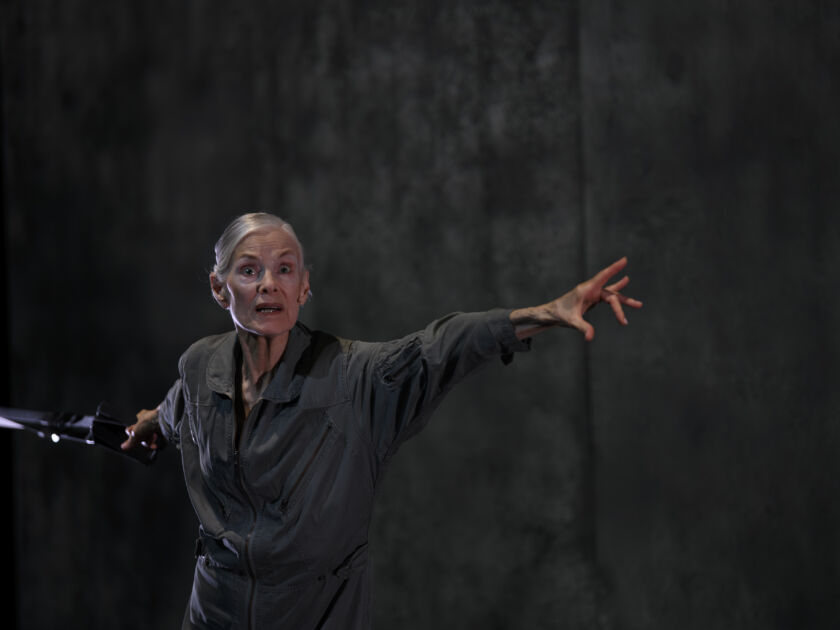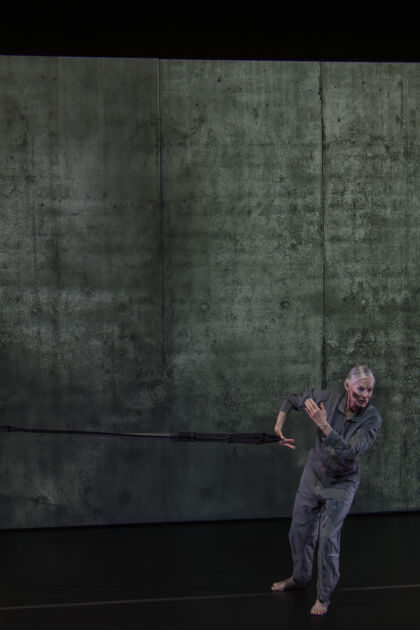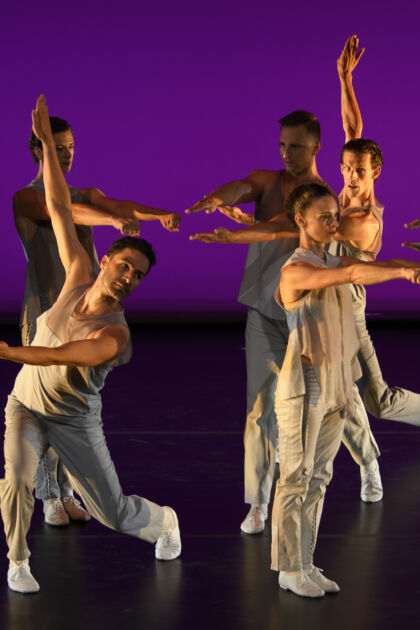Lucinda Childs is one of the foremost choreographers of our time. She was a member of the legendary Judson Dance Theater collective, which revolutionized the art of dance in 1960s New York, and her work has made a lasting impact on the evolution of contemporary dance since the 1970s. Inspired by the compositions of Philip Glass, Hildur Guðnadóttir and Johann Sebastian Bach, Four New Works is a showcase of her latest creations, presented together with the Lucinda Childs Dance Company, video artist Anri Sala and pianist Anton Batagov, while also featuring a 1965 solo danced by the iconic choreographer herself.
Lucinda, in Geranium (1965), you referenced a legendary NFL championship game from 1964. This piece is now the basis for your collaboration with Anri Sala.
Yes, it’s the first time I’ve revised it. I’m using one of four sections in which I originally attached myself with a chain and padlock to the end of a hammock and moved in a semicircular arc, executing in slow motion the action of a runner racing to catch the ball, fumbling, and being overturned. For the sound score, I edited a radio broadcast of the NFL championship game between the Cleveland Browns and the Baltimore Colts. This broadcast can also be heard in the new piece, for which Anri Sala has created the most fitting stage extension: lighting and a projection wall, on which cloudy images of the original match appear again and again, like memories.
There is also a very striking exploration of memory in your landmark work Dance (1979), for which Philip Glass composed the music. You have a long history together and are now presenting the latest chapter in your collaboration: Distant Figure.
Philip originally composed Distant Figure with the idea in mind that pianist Anton Batagov would be on stage with my dancers, but as a ‘distant figure’ in the back. It was planned for the Park Avenue Armory in New York City with a design by James Turrell, but it never happened. So Philip said, we’ll make a recording for you so you can keep on working on it while on tour, and Anton Batagov recorded it with other Glass piano works.
So the choreography evolved while you were listening to this wonderful piece, which starts with just two notes and unfolds into a complex and intoxicating movement of musical patterns?
Yes, there is a lot of movement in the piece. It opens up, backs down, then there is a kind of vortex in the middle, which is repeated, then it breaks down again. From the beginning, I liked the idea of working with three + three dancers, which I had never done before.
The dance vocabulary is very Lucinda Childs, in that the pulse of the music is translated into floating movements that are simple and complex at the same time, which makes Distant Figure an intriguing counterpart to Timeline. In the latter, Hildur Guðnadóttir’s music consists of hyper-tensed, drone-like cello bows, with the music not providing any pulses.
Yes, and there are intervals between the sounds from her playing the cello. It’s thanks to the discipline we learned from Merce Cunningham that the dancers keep a pulse going, internally and collectively, which is very sophisticated for dancers to do. They are constantly counting. We have worked each phrase according to the duration of each section. But it’s never the same; it’s all like a puzzle with different lengths and different times.
It’s fascinating how well the Four New Works complement each other in terms of musical range, dance language, staging and layered time periods: it starts with Bach!
Philip Glass always said if you want to learn about harmony, listen to Bach. I’ve often thought about this but never choreographed anything using his music. I then had a commission from the Opéra National de Lyon and first worked on a solo to the piano version of Bach’s famous cantata. But it was never premiered, and now it finally comes to life as a duet which I created for my dancers.
András Siebold in conversation with Lucinda Childs



